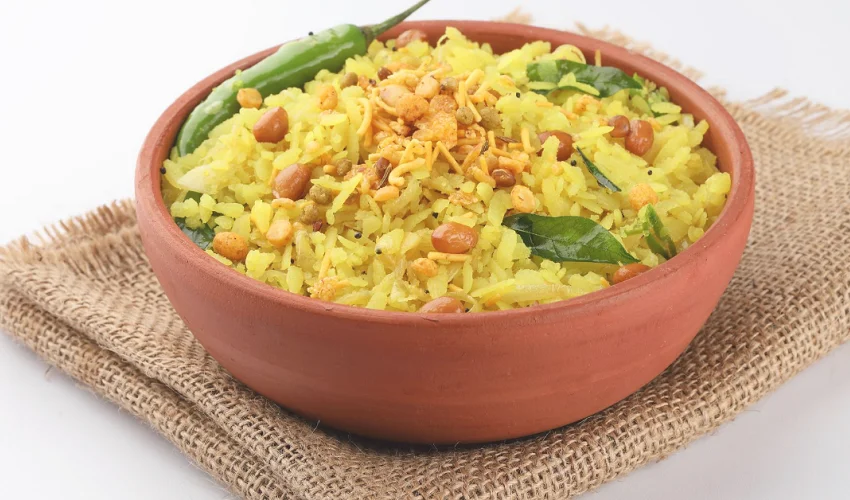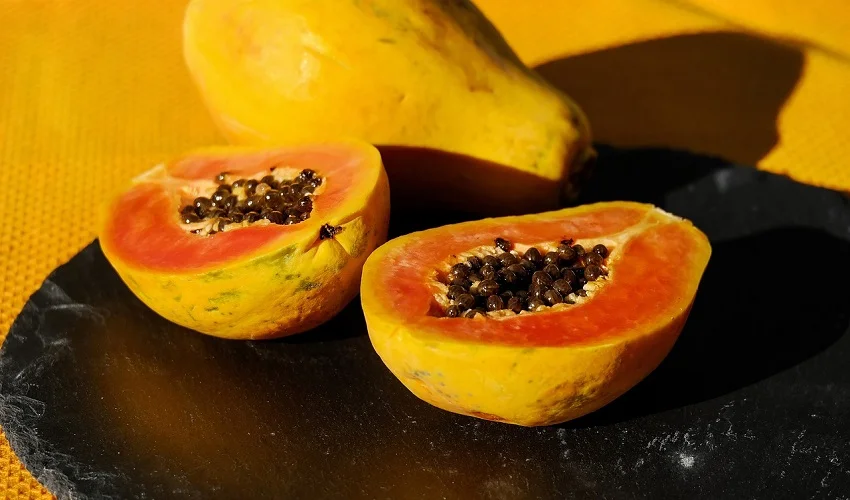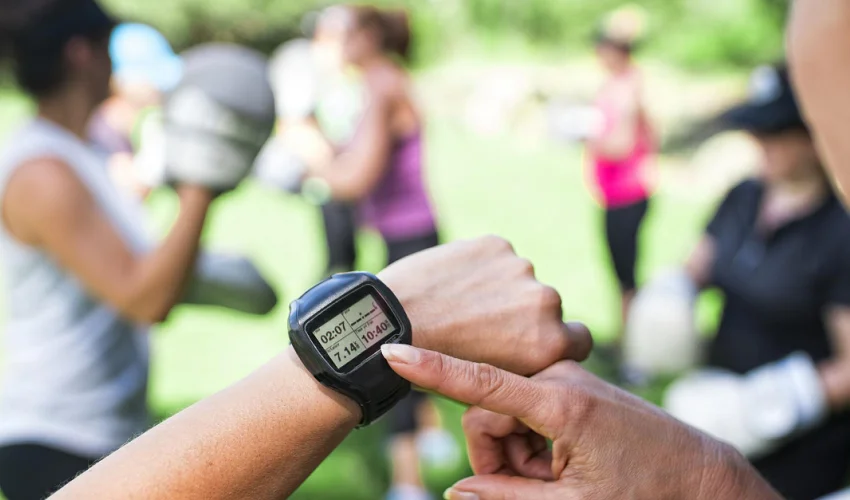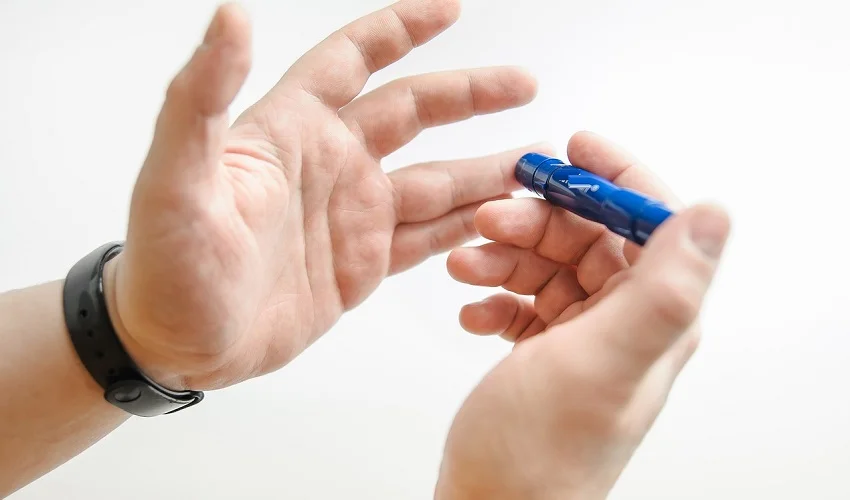Introduction to Poha
Poha, also known as flattened rice, is a popular breakfast dish in India. It is made by parboiling rice, then drying it and flattening it into flakes. Poha is a nutritious and low-calorie food that is often consumed by diabetics due to its low glycemic index. Poha is also easy to digest and provides instant energy, making it an ideal option for those with a busy lifestyle. In this article, we will explore the nutritional value of poha per 100g and its benefits for diabetics.
Nutritional Composition of Poha
Poha also contains essential vitamins and minerals, such as iron, magnesium, and potassium. These nutrients are important for maintaining overall health and well-being. Additionally, Poha is a good source of dietary fiber, which can help regulate blood sugar levels and improve digestion. Overall, Poha is a nutritious and delicious option for diabetics to include in their diet.
Importance of Nutritional Analysis for Diabetics
For individuals with diabetes, understanding the nutritional value of the food they consume is essential for maintaining stable blood sugar levels and overall health. By analyzing the nutritional content of foods, such as poha, diabetics can make informed decisions about their diet and make necessary adjustments to meet their specific dietary needs. This detailed analysis of poha’s nutritional value per 100g provides valuable information for diabetics, enabling them to plan their meals accordingly and make healthier choices. With this knowledge, diabetics can better manage their condition and improve their overall well-being.
Carbohydrate Content
Total Carbohydrates in Poha
Poha is a nutritious option for diabetics due to its low glycemic index and high fiber content. When it comes to total carbohydrates in Poha, it contains approximately 67 grams per 100 grams. This makes it a good source of energy for individuals with diabetes, as it provides a sustained release of glucose into the bloodstream. However, it is important for diabetics to consume Poha in moderation and monitor their blood sugar levels to maintain optimal control.
Dietary Fiber in Poha
Poha is a nutritious breakfast option that is commonly consumed in India. It is low in calories and rich in dietary fiber, making it an ideal choice for individuals with diabetes. Dietary fiber plays a crucial role in managing blood sugar levels as it helps slow down the absorption of glucose in the body. Consuming Poha regularly can help regulate blood sugar levels and prevent sudden spikes. Additionally, the high fiber content in Poha aids in digestion and promotes a feeling of fullness, which can prevent overeating and aid in weight management. Including Poha in a diabetic diet can provide essential nutrients while helping to maintain stable blood sugar levels.
Glycemic Index of Poha
The glycemic index (GI) of poha is a measure of how quickly it raises blood sugar levels. Poha has a low glycemic index, making it a suitable food choice for diabetics. Foods with a low GI are digested and absorbed more slowly, resulting in a gradual increase in blood sugar levels. This helps in maintaining stable blood sugar levels and prevents sudden spikes. Poha is also rich in fiber, which further aids in regulating blood sugar levels. Including poha in a diabetic diet can provide a steady source of energy without causing sharp fluctuations in blood sugar levels.
Protein Content
Protein Content in Poha
Poha is a popular Indian breakfast dish made from flattened rice flakes. It is not only delicious but also provides several nutritional benefits. One important aspect of Poha is its protein content. Protein is an essential macronutrient that plays a crucial role in the growth and repair of tissues in the body. In 100 grams of Poha, there is approximately 7 grams of protein. This makes it a good source of protein, especially for vegetarians and vegans who may have limited options. Including Poha in your diet can help meet your daily protein requirements and support overall health and well-being.
Amino Acid Profile of Poha
This is not only delicious but also provides several health benefits. One important aspect of Poha is its amino acid profile. Amino acids are the building blocks of proteins and play a crucial role in various bodily functions. Poha contains a good amount of essential amino acids, including leucine, isoleucine, and valine, which are important for muscle growth and repair. It also contains non-essential amino acids like glutamine, which supports gut health and immune function. The amino acid profile of Poha makes it a nutritious choice for diabetics, as it helps regulate blood sugar levels and provides sustained energy throughout the day. Incorporating Poha into your diet can be a great way to boost your amino acid intake and support overall health.
Protein Quality of Poha
Poha is a good source of protein, providing essential amino acids that are necessary for the body’s growth and repair. The protein in Poha is easily digestible and has a high biological value, meaning that it contains all the essential amino acids in the right proportions. This makes Poha a complete protein source, which is important for maintaining muscle mass and promoting overall health. Whether you are a diabetic or not, incorporating Poha into your diet can be a great way to boost your protein intake and support your body’s nutritional needs.
Fat Content
Total Fat in Poha
It is low in fat and cholesterol, making it a healthy choice for individuals with diabetes. In a 100g serving of poha, the total fat content is relatively low, with only about 1.2g of fat. This makes poha a suitable option for those looking to manage their fat intake while still enjoying a delicious and nutritious meal. Additionally, poha is rich in carbohydrates, providing a good source of energy to start the day. It is also a good source of fiber, which aids in digestion and helps regulate blood sugar levels. Overall, poha is a nutritious and diabetic-friendly food that can be enjoyed as part of a balanced diet.
Saturated Fat in Poha
It is made by flattening rice grains and then roasting them to make them light and crispy. Poha is a nutritious option for diabetics as it is low in saturated fat. Saturated fat is a type of fat that is commonly found in animal products and is known to raise cholesterol levels. Consuming high amounts of saturated fat can increase the risk of heart disease and other health conditions. However, Poha contains only a small amount of saturated fat, making it a healthier choice for individuals with diabetes. By incorporating Poha into their diet, diabetics can enjoy a delicious and nutritious meal without worrying about their saturated fat intake.
Trans Fat in Poha
Poha is made from flattened rice flakes. It is a low-calorie and gluten-free option that is often consumed by people with diabetes. One of the important factors to consider when choosing Poha as a diabetic-friendly food is its trans fat content. Trans fats are known to increase the risk of heart disease and worsen insulin resistance. Fortunately, Poha is naturally low in trans fats, making it a healthier choice for individuals with diabetes. However, it is still important to consume Poha in moderation and pair it with other nutritious ingredients to maintain a balanced diet.
Vitamin and Mineral Content
Vitamins in Poha
Poha is a nutritious dish that is commonly consumed in India. When it comes to vitamins, Poha is particularly rich in vitamin B1, also known as thiamine. Vitamin B1 plays a crucial role in converting food into energy and maintaining proper nerve function. Additionally, Poha is a good source of vitamin B3, which is important for maintaining healthy skin and proper digestion. Including Poha in your diet can help ensure that you are getting an adequate amount of these essential vitamins.
Minerals in Poha
Poha is not only delicious but also packed with essential minerals that are beneficial for overall health. When it comes to minerals, Poha is a good source of iron, magnesium, and potassium. Iron is important for the production of red blood cells and helps in carrying oxygen throughout the body. Magnesium plays a crucial role in maintaining healthy bones and muscles, while potassium helps in regulating blood pressure. Including Poha in your diet can provide you with these important minerals and contribute to your overall well-being.
Role of Vitamins and Minerals in Diabetes Management
Vitamins and minerals play a crucial role in diabetes management. They are essential for maintaining overall health and well-being, especially for individuals with diabetes. These micronutrients are involved in various bodily functions, including regulating blood sugar levels, supporting immune function, and promoting proper nerve function. Vitamins such as vitamin C, vitamin E, and B-complex vitamins have antioxidant properties that help protect cells from damage caused by high blood sugar levels. Minerals like magnesium, chromium, and zinc are important for insulin function and glucose metabolism. Including a variety of vitamin-rich foods, such as fruits, vegetables, whole grains, and lean proteins, can help individuals with diabetes meet their nutrient needs and support optimal diabetes management.
Summary of Poha’s Nutritional Value
Poha is a popular breakfast option in India. It is made from rice that has been parboiled, flattened, and dried. Poha is a nutritious food choice, especially for diabetics, as it is low in calories and fat. It is also a good source of carbohydrates, providing energy to the body. Poha is rich in iron, which is essential for the production of red blood cells and the prevention of anemia. Additionally, it contains vitamins B1, B3, and B6, which are important for maintaining a healthy nervous system. Poha is also a good source of dietary fiber, which aids in digestion and helps regulate blood sugar levels. Overall, Poha is a delicious and nutritious option for diabetics to include in their diet.
Recommendations for Diabetics
Diabetes is a chronic condition that requires careful management of diet and lifestyle. For individuals with diabetes, it is important to make informed choices about the foods they consume. When it comes to poha, a popular Indian breakfast dish, understanding its nutritional value is crucial. Poha is made from flattened rice flakes and is low in calories and fat. It is also a good source of carbohydrates, which provide energy. However, individuals with diabetes should consume poha in moderation due to its high glycemic index. It is recommended to pair poha with protein-rich foods, such as yogurt or eggs, to help regulate blood sugar levels. Additionally, incorporating vegetables like spinach or fenugreek leaves can add nutritional value and fiber to the dish. Overall, it is important for diabetics to consult with a healthcare professional or a registered dietitian for personalized recommendations on incorporating poha into their diet.
Further Research and Considerations
Further research and considerations are crucial when it comes to understanding the nutritional value of Poha for diabetics. While this article provides a detailed analysis of the nutritional content per 100g, it is important to note that individual dietary needs may vary. Consulting with a healthcare professional or registered dietitian is recommended to determine the appropriate portion sizes and overall dietary plan for managing diabetes. Additionally, it is important to consider other factors such as personal preferences, lifestyle, and any existing medical conditions when incorporating Poha into a diabetic diet. Further studies and research are needed to explore the long-term effects of Poha consumption on blood sugar levels and overall glycemic control. By staying informed and making informed decisions, individuals with diabetes can make the most of Poha’s nutritional benefits while effectively managing their condition.




